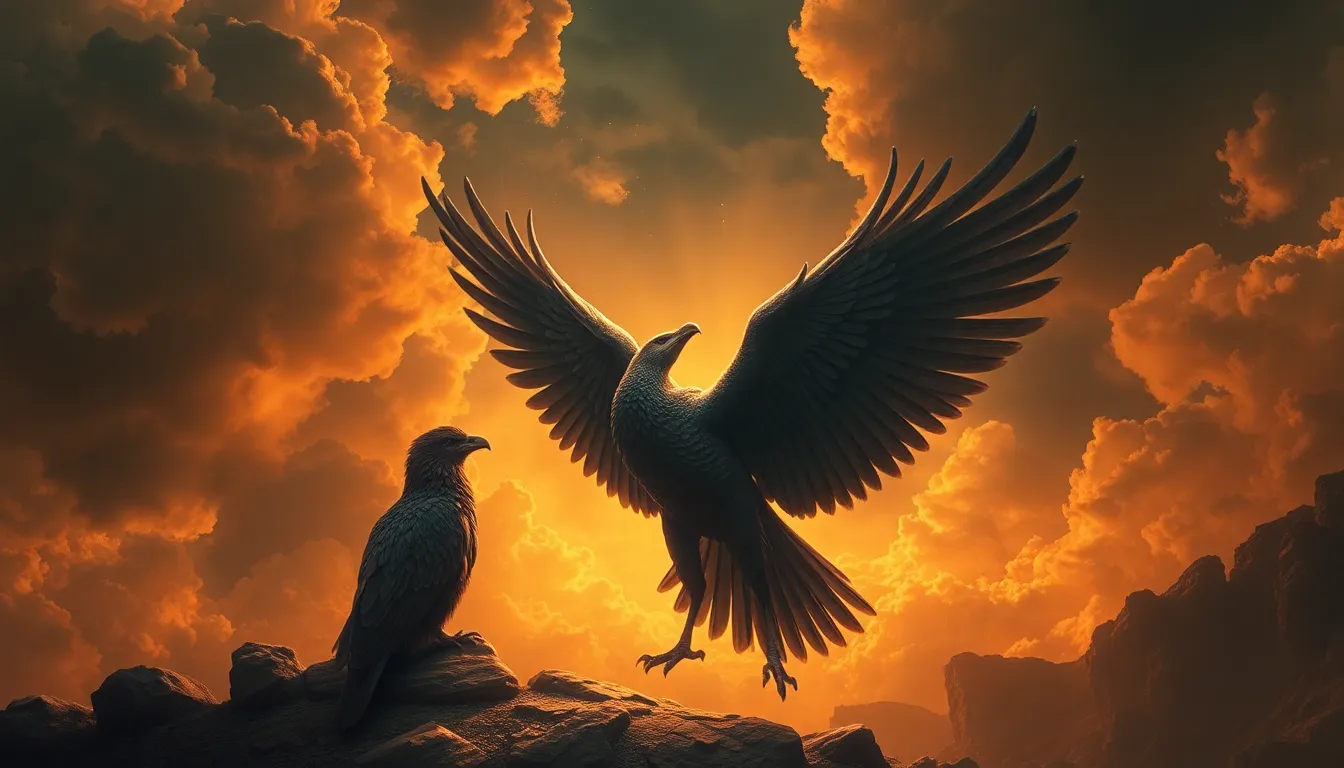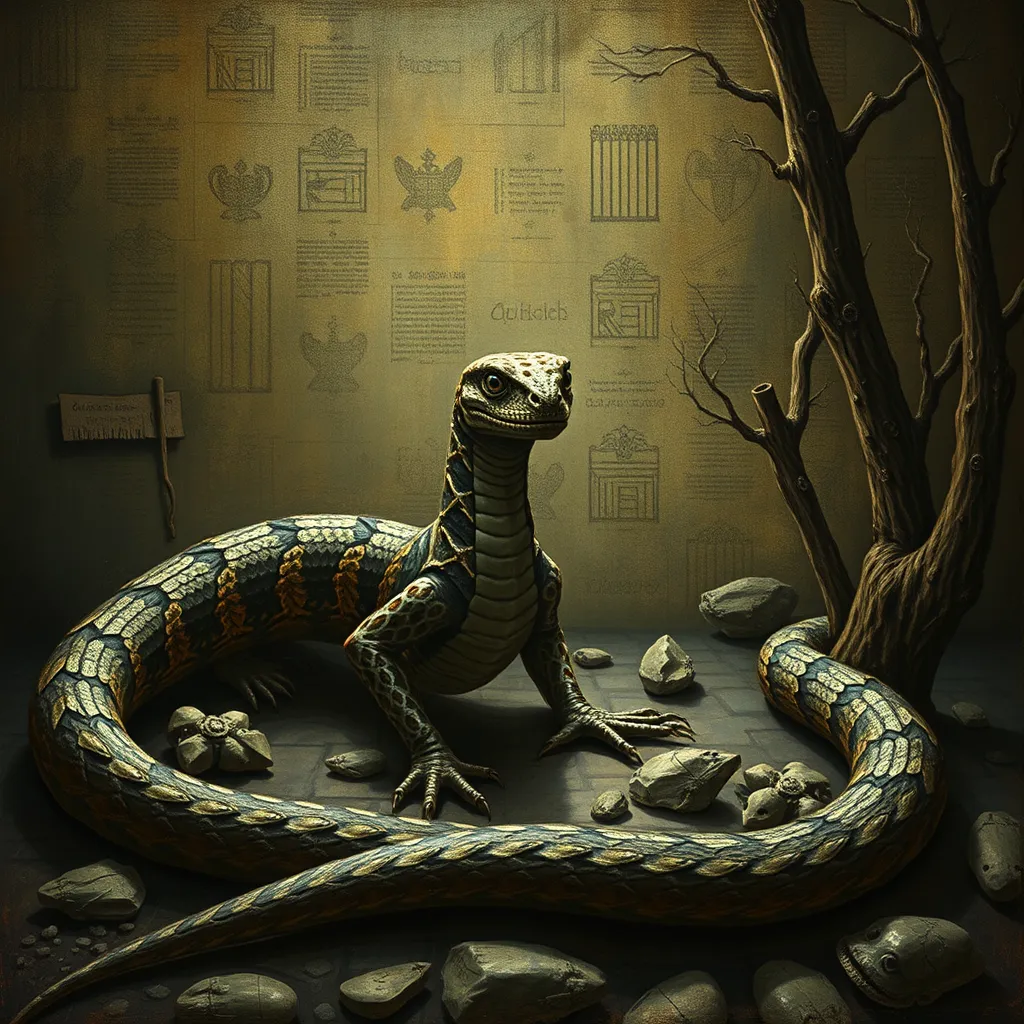The Simurgh & the Roc: A Tale of Two Birds in Persian Folklore
I. Introduction
Mythical birds have long captivated human imagination, symbolizing various cultural values, beliefs, and ideals. Two of the most prominent figures in this realm are the Simurgh from Persian folklore and the Roc from Arabian tales. Both birds embody unique characteristics and cultural significance, offering rich narratives that reflect the societies from which they originate. This article aims to explore the distinct features of the Simurgh and the Roc, their historical contexts, and their enduring impact on literature and culture.
II. The Simurgh: The Mythical Bird of Persian Culture
A. Description and characteristics of the Simurgh
The Simurgh is often depicted as a magnificent bird, resembling a peacock or a griffin, with majestic plumage and a striking presence. This mythical creature is said to possess immense wisdom and a deep connection to nature. It is often illustrated with features that combine elements of various birds, showcasing its divine and unique nature.
B. Historical origins and evolution in Persian literature
The Simurgh’s origins can be traced back to ancient Persian mythology, where it is featured in texts like the Shahnameh (The Book of Kings) by Ferdowsi. Over centuries, the Simurgh evolved, transitioning from a creature of destruction to one of healing and guidance. It became a symbol of nurturing, often associated with motherhood and the protection of the innocent.
C. Symbolism of the Simurgh in Persian mythology
In Persian culture, the Simurgh embodies several key themes:
- Wisdom: The Simurgh is often portrayed as a source of knowledge, guiding heroes on their quests.
- Transformation: Its ability to regenerate from flames symbolizes rebirth and renewal.
- Connection to the divine: The Simurgh serves as a bridge between the earthly realm and the heavens, reflecting the spiritual journey of individuals.
III. The Roc: The Giant Bird of Arabian Nights
A. Description and characteristics of the Roc
The Roc is a legendary giant bird known for its immense size and strength. Often described as being able to carry off elephants and whales, the Roc is a formidable creature that commands respect. It is typically depicted with vast wings and a fierce demeanor, embodying the themes of power and adventure.
B. Origins in Arabian and Middle Eastern folklore
Originating from Arabic literature, the Roc first appeared in works such as One Thousand and One Nights. Its tales likely drew inspiration from various sources, including travelers’ accounts of large birds encountered in distant lands. Over time, the Roc became a staple figure in Middle Eastern folklore, symbolizing the unknown and the extraordinary.
C. Role of the Roc in “One Thousand and One Nights”
In One Thousand and One Nights, the Roc features prominently in the adventures of Sinbad the Sailor, where it is depicted as both a terrifying adversary and a source of awe. The bird’s ability to transport characters to new realms underscores its role as an agent of adventure and exploration.
IV. Comparative Analysis of the Simurgh and the Roc
A. Similarities in their roles as mighty birds
Both the Simurgh and the Roc serve as symbols of power and majesty in their respective cultures. They are often depicted as creatures of great strength and are central to the narratives in which they appear. Each bird represents a connection to the divine and the extraordinary, transcending the ordinary limitations of the human experience.
B. Differences in symbolism and cultural significance
Despite their similarities, the Simurgh and the Roc embody different symbolic meanings:
- Simurgh: Represents wisdom, healing, and maternal protection.
- Roc: Embodies raw power, adventure, and the thrill of the unknown.
C. Thematic elements shared between the two figures
Both birds illustrate themes of journey and transformation, playing pivotal roles in the quests of heroes. Their narratives often involve encounters that lead to personal growth and discovery, highlighting the significance of mythical creatures in the human experience.
V. The Simurgh in Persian Literature and Art
A. Notable literary works featuring the Simurgh
The Simurgh has appeared in various Persian literary works, most notably in the Shahnameh and the poetry of Rumi, where it serves as a metaphor for the soul’s journey toward enlightenment. These texts explore its role as a mentor and guide for heroes navigating their paths.
B. Artistic representations of the Simurgh in Persian art
Persian art features the Simurgh in intricate miniatures and tapestries, often showcasing its beauty and grandeur. Artists have captured its ethereal essence, illustrating scenes of the Simurgh aiding heroes or soaring through the skies, symbolizing divine intervention and protection.
C. The Simurgh’s influence on later Persian narratives
The legacy of the Simurgh continues to influence modern Persian literature and storytelling, where it remains a symbol of hope and guidance. Its stories are often revisited and reinterpreted, reflecting the cultural richness of Persian heritage.
VI. The Roc in Global Folklore and Literature
A. Examination of the Roc’s presence in various cultures
The Roc’s influence extends beyond Arabian folklore, appearing in various global cultures. It has inspired stories in Indian, Chinese, and even Western literature, often symbolizing the themes of adventure and the sublime.
B. Influence on modern literature and popular culture
In contemporary literature and popular culture, the Roc has inspired numerous adaptations, from fantasy novels to films. Its image as a giant bird continues to resonate, representing the allure of the unknown and the thrill of exploration.
C. The Roc as a symbol of power and adventure
The Roc’s depiction as a powerful creature captures the human fascination with the extraordinary. It serves as a metaphor for the challenges and adventures that life presents, urging individuals to confront their fears and embrace the journey ahead.
VII. The Legacy of the Simurgh and the Roc
A. The impact of these birds on contemporary storytelling
The stories of the Simurgh and the Roc continue to inspire writers and artists today, reminding us of the timeless themes of courage, wisdom, and adventure. Their legacies are woven into the fabric of modern narratives, illustrating the enduring power of myth.
B. Modern interpretations and adaptations in media
In film, literature, and art, both the Simurgh and the Roc have been reimagined, influencing various genres and styles. Their stories adapt to contemporary contexts while retaining their core themes, ensuring their relevance in today’s world.
C. Lessons learned from the tales of the Simurgh and the Roc
The tales of these mythical birds impart valuable lessons about resilience, the search for knowledge, and the importance of connection to the divine. They remind us of the beauty of storytelling and the shared human experience across cultures.
VIII. Conclusion
The Simurgh and the Roc, though rooted in different cultures, share a profound significance that transcends time and geography. Their narratives reflect the complexities of human experience, embodying themes of power, wisdom, and adventure. As we continue to explore and reinterpret these mythical creatures, we celebrate the enduring power of folklore in shaping cultural identity and understanding our place in the world.




